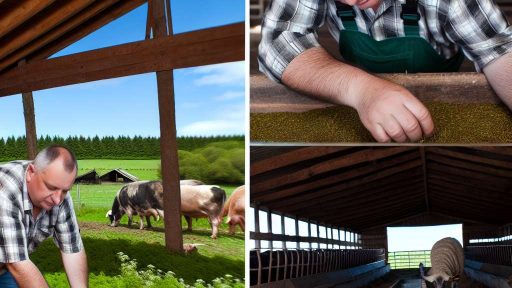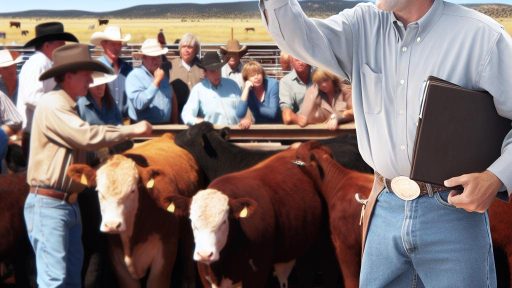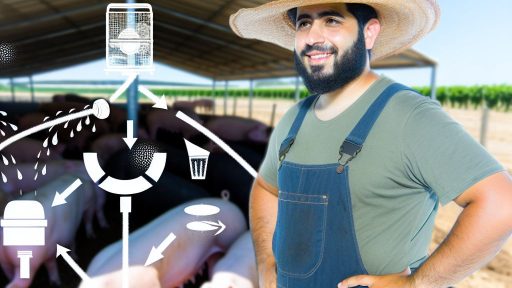Understanding Aquaculture: Types and Benefits
What is Aquaculture?
Aquaculture refers to the farming of aquatic organisms.
This includes fish, crustaceans, mollusks, and aquatic plants.
It plays a crucial role in global food production.
Types of Aquaculture Systems
Aquaculture systems vary based on methods and environments.
Some common types include freshwater, marine, and brackish water systems.
Freshwater Aquaculture
Freshwater aquaculture involves farming species in ponds, rivers, and lakes.
This method is popular for species like catfish and tilapia.
Marine Aquaculture
Marine aquaculture focuses on ocean farming.
It includes raising species such as salmon and shellfish.
Brackish Water Aquaculture
Brackish water aquaculture occurs in estuarine environments.
This system often cultivates shrimp and some fish species.
Benefits of Aquaculture
Aquaculture offers numerous benefits to society.
Food Security
This farming method increases food availability globally.
It provides a sustainable source of protein for many communities.
Economic Opportunities
Aquaculture creates jobs and boosts local economies.
Transform Your Agribusiness
Unlock your farm's potential with expert advice tailored to your needs. Get actionable steps that drive real results.
Get StartedMany communities rely on aquaculture for their livelihoods.
Environmental Sustainability
Responsible aquaculture practices contribute to conservation efforts.
They can help restore and maintain aquatic habitats.
Choosing the Right Location for Your Aquaculture System
Importance of Location
Aquaculture success heavily relies on location.
The chosen site affects water quality and species growth rates.
Furthermore, it determines accessibility and operational efficiency.
Key Factors to Consider
Several factors influence your site selection.
- Water source quality is essential for your aquatic system.
- Proximity to markets reduces transportation costs.
- Local climate impacts species choice and health.
- Availability of necessary infrastructure is critical.
Assessing Water Quality
Water quality directly influences fish health and growth rates.
Conduct tests for temperature, pH, and dissolved oxygen.
Check for pollutants that might affect your system.
It is wise to monitor seasonal variations in water quality.
Evaluating Accessibility
Accessibility improves operational convenience and efficiency.
Locate your system near transportation routes.
Consider the distance to suppliers and markets.
This location affects your ability to deliver fresh products.
Understanding Local Climate
Your local climate influences species and system design.
Warm regions may support faster growth of certain species.
Cold areas might require additional heating systems.
Thus, understanding climate patterns is crucial.
Identifying Necessary Infrastructure
Good infrastructure supports efficient aquaculture operations.
Ensure access to reliable electricity and water supply.
Consider proximity to veterinary services and suppliers.
These resources can significantly impact your system’s success.
Essential Equipment and Materials for Beginners
Aquaculture Tanks
Selecting the right tank is crucial for your system.
Showcase Your Farming Business
Publish your professional farming services profile on our blog for a one-time fee of $200 and reach a dedicated audience of farmers and agribusiness owners.
Publish Your ProfileConsider the size based on the fish species.
Plastic, fiberglass, or concrete tanks are good options.
Filtration Systems
Effective filtration is vital for maintaining water quality.
Look for a system that removes waste and toxins.
Mechanical, biological, and chemical filters each serve a purpose.
Water Pumps
Pumps circulate water throughout the system.
Choose a pump that suits your tank’s size and species requirements.
Submersible and inline pumps are common choices.
Aeration Equipment
Aeration increases oxygen levels in the water.
Air stones and diffusers are popular aeration devices.
Ensure your system maintains adequate oxygen for fish health.
Heating and Cooling Equipment
Fish thrive in specific temperature ranges.
Install heaters or chillers to regulate water temperature.
Monitor temperature constantly for optimal health.
Testing Kits
Testing kits help evaluate water quality regularly.
Check for pH, ammonia, nitrite, and nitrate levels.
Maintaining ideal water parameters supports fish well-being.
Fish Stocking Supplies
Purchase healthy fingerlings from reputable suppliers.
Ensure the species is suitable for your system’s conditions.
Consider compatibility with other tank inhabitants.
Feeding Equipment
Invest in quality feeders for proper feeding schedules.
Automatic feeders can help maintain consistent feeding times.
Choose feed that meets the nutritional needs of your fish.
Additional Accessories
Consider lighting to mimic natural conditions.
Decorations and plants enhance the habitat for your fish.
Include nets and maintenance tools for managing your system.
Explore Further: Beef Cattle Feeding Plans for Maximum Growth
Setting Up the Aquaculture Environment
Importance of Water Quality
Water quality plays a critical role in aquaculture success.
Fish and other aquatic organisms thrive in clean water.
Testing water parameters should become a regular routine.
Common parameters include pH, ammonia, nitrite, and nitrate levels.
Moreover, dissolved oxygen is vital for fish health.
Understanding pH Levels
The pH level affects fish metabolism and growth.
Most aquatic species prefer a pH between 6.5 and 8.5.
Regular pH testing ensures it remains within this range.
Adjusting pH may require adding buffers or acids.
Consult professionals if significant adjustments are needed.
Handling Ammonia and Nitrite
Ammonia and nitrite are toxic to fish.
Regular water changes help limit these compounds.
Installing biofilters promotes beneficial bacteria growth.
Showcase Your Farming Business
Publish your professional farming services profile on our blog for a one-time fee of $200 and reach a dedicated audience of farmers and agribusiness owners.
Publish Your ProfileThese bacteria convert harmful ammonia into less toxic substances.
Monitoring Temperature
Temperature significantly influences aquatic life.
Different species have specific temperature preferences.
Maintaining a stable temperature is crucial to avoid stress.
Heaters or chillers can help regulate water temperature.
Additionally, use thermometers to monitor conditions closely.
Ensuring Dissolved Oxygen Levels
Dissolved oxygen is essential for fish respiration.
Aeration devices can increase oxygen levels in water.
Check oxygen levels regularly using test kits.
Low oxygen levels can lead to fish mortality.
Pest and Disease Management
Healthy water quality helps prevent diseases.
Monitor fish behavior for signs of stress or illness.
Implement quarantine measures for new stock.
Consult with veterinarians to manage outbreaks effectively.
The Role of Filtration Systems
Filtration systems remove debris and impurities from water.
Choose filters based on your aquaculture system size.
Regular maintenance ensures filter efficiency and longevity.
Clean filters often to prevent clogging and buildup.
Water Quality Management
Maintaining optimal water conditions promotes healthy growth.
The right environment enhances overall system productivity.
Successful aquaculture relies heavily on diligent monitoring.
Invest time in understanding and managing water quality.
You Might Also Like: Pest Control Strategies For Livestock Housing
Selecting the Right Species for Your First Aquaculture System
Understanding Aquaculture Species
Aquaculture species vary widely in their needs and growth potential.
Choosing the right species is crucial for your success.
Each species has different environmental and dietary requirements.
Factors to Consider
Start by assessing the water conditions in your system.
Consider the species’ temperature, pH, and salinity preferences.
Next, think about the space available for your aquaculture system.
Many species require specific amounts of space for optimal growth.
Additionally, research the species’ growth rate and market demand.
Popular Beginners’ Choices
Tilapia is a great starter fish for beginners.
It adapts well to various water conditions.
Catfish is another popular choice, known for its hardiness.
Crayfish can also be suitable, offering unique market opportunities.
Local Regulations and Sustainability
Check local regulations before selecting your species.
Some species may have restrictions due to ecological balance.
Always opt for sustainable practices in aquaculture.
This choice helps preserve natural resources and protects ecosystems.
Learning from Experienced Farmers
Reach out to local aquaculture associations for guidance.
Showcase Your Farming Business
Publish your professional farming services profile on our blog for a one-time fee of $200 and reach a dedicated audience of farmers and agribusiness owners.
Publish Your ProfileNetworking with experienced farmers can provide valuable insights.
Participate in forums and workshops focused on aquaculture.
These resources enhance your knowledge and skills.
Final Tips for Selection
Start small to manage resources and learn effectively.
Document your experiences and adjust your approach as needed.
Always keep an eye on market trends to maximize profit.
Delve into the Subject: Health Management in Exotic Farming

Feeding and Nutrition: Best Practices for Aquaculture Animals
Understanding Nutritional Needs
Every aquaculture species has unique nutritional requirements.
Knowing these requirements is crucial for their health and growth.
Fish, shellfish, and crustaceans require different diets.
Research the specific needs of your chosen species.
Quality feed promotes optimal growth rates.
Selecting the Right Feed
Choosing the right feed is essential in aquaculture.
Commercial feeds vary in quality and formulation.
Look for feeds that meet the nutritional standards.
Consider high-quality protein sources like fish meal.
Vegetable proteins can supplement or replace animal proteins.
Ensure that feeds are free from contaminants.
Feeding Techniques
Proper feeding techniques enhance feed efficiency.
Use automatic feeders or hand feed based on species needs.
Adjust the feeding frequency according to growth stages.
Monitor feeding behavior to avoid overfeeding.
Overfeeding can lead to water pollution and health issues.
Monitoring and Adjusting Diets
Regularly assess the health of your aquaculture animals.
Adjust diets based on growth performance and health assessments.
Keep an eye on water quality, as it affects feeding efficiency.
Utilize nutritional analysis to optimize feed formulations.
Regular adjustments improve productivity and animal welfare.
Addressing Common Nutritional Challenges
Identify signs of undernutrition or malnutrition promptly.
Underfed animals display stunted growth and poor health.
Use education and resources to tackle nutritional gaps.
Work closely with aquaculture nutritionists for specialized advice.
This collaboration helps custom tailor diets to your needs.
Gain More Insights: Sustainable Livestock Waste Solutions For Farms
Monitoring and Maintaining Your Aquaculture System
Importance of Regular Monitoring
Regular monitoring keeps your aquaculture system healthy.
It helps identify problems before they escalate.
Monitoring also ensures optimal water quality for your aquatics.
Key Parameters to Monitor
Water temperature is crucial for aquatic species.
pH levels must remain stable for healthy growth.
Dissolved oxygen is vital for all aquatic life.
Showcase Your Farming Business
Publish your professional farming services profile on our blog for a one-time fee of $200 and reach a dedicated audience of farmers and agribusiness owners.
Publish Your ProfileSalinity levels should match the needs of your species.
Nitrogen levels indicate fish waste accumulation.
Tools for Monitoring
Use a reliable thermometer to check water temperature.
pH meters are essential for measuring acidity or alkalinity.
Test kits help assess ammonia, nitrite, and nitrate levels.
Oxygen meters are available for checking dissolved oxygen.
Maintenance Practices
Regular water changes enhance system health.
Clean your systems periodically to prevent blockages.
Inspect equipment regularly for signs of wear.
Replace worn hoses or pumps to maintain efficiency.
Feeding and Care
Feed your aquatic species the appropriate diet.
Monitor feeding schedules to prevent overfeeding.
Remove uneaten food to maintain water quality.
Record Keeping
Maintain a log of water quality parameters.
Document feeding amounts and schedules for reference.
Records help you track changes and improve management.
Dealing with Problems
Be aware of signs of stress in your aquatic species.
React promptly to drop in water quality indicators.
Seek expert advice when necessary to resolve issues.
Implement preventative measures based on past experiences.
Common Challenges and Solutions in Aquaculture for Beginners
Understanding Water Quality
Maintaining the right water quality is vital in aquaculture.
Beginners often struggle with pH balance and ammonia levels.
Regular testing can help identify issues early.
Utilizing water conditioners can mitigate harmful substances.
Consistently monitoring parameters ensures a healthy environment.
Dealing with Disease Outbreaks
Fish diseases can pose a serious threat to your aquaculture system.
Maintaining hygiene is essential to preventing outbreaks.
Besides, isolating sick fish can prevent disease from spreading.
Implementing a vaccination program can be effective for larger systems.
Ultimately, adequate knowledge about common diseases helps in quick response.
Navigating Feeding Regimens
Finding the right feeding regime is another challenge for beginners.
Overfeeding can lead to waste and water quality problems.
Using high-quality feed promotes better growth and health.
Moreover, understanding fish nutritional needs is crucial for success.
Consulting experts can help improve feeding strategies.
Learning About Stock Management
Efficient stock management is vital for productivity.
Beginners often lack knowledge in selecting the right species.
Size and species should match the aquaculture system’s capacity.
Regularly evaluating stock health helps identify issues early.
For example, assessing growth rates can aid in making adjustments.
Showcase Your Farming Business
Publish your professional farming services profile on our blog for a one-time fee of $200 and reach a dedicated audience of farmers and agribusiness owners.
Publish Your ProfileManaging Environmental Factors
Environmental conditions significantly impact aquaculture success.
Temperature fluctuations can stress aquatic species.
Implementing temperature control systems helps reduce this risk.
Furthermore, shading can protect systems from overheating.
Being aware of seasonal changes assists in planning ahead.
Additional Resources
Coral Farming at home: How to start? | Reef2Reef
The Ultimate Aquaponics Beginner’s Guide – Go Green Aquaponics




